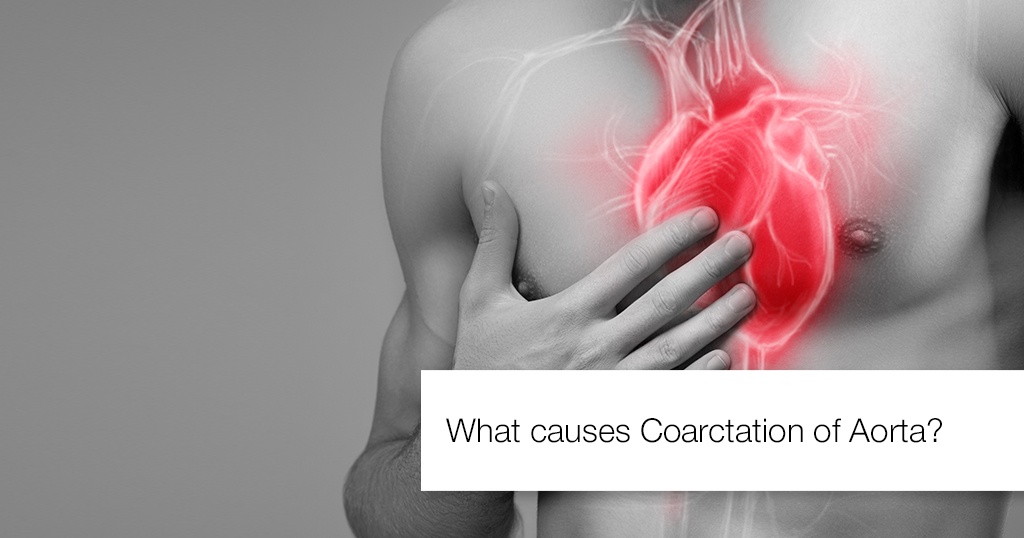

Dr. Kavitha Chintala, MD. FACC
Sr. Consultant Cardiologist
American Board of Pediatric Cardiology
Apollo Hospitals, Jubilee Hills
Coarctation of aorta is a narrowing in the great artery that arises from the left side of the heart and takes oxygenated blood to all parts of the body. It is a luminal narrowing in the descending thoracic aorta located usually just distal to the origin of left subclavian artery that goes to the left arm. The narrowing is usually discrete due to shelf-like in-folding of the posterior wall of aorta but sometimes especially in newborns, it may be associated with diffuse narrowing of the transverse portion of the aortic arch. Rarely, coarctation may involve a long hypoplastic segment distal to the left subclavian artery. Coarctation may also refer to narrowing anywhere in thoracic or abdominal aorta or its branches
It is a congenital anomaly, meaning it is present at or before birth. It occurs during the 6th to 8th week of gestation and constitutes 5-8% of all congenital heart defects.
The exact reason for coarctation of aorta, like for most other CHDs is not known. Several mechanisms are proposed. Two theories are dominant:
A. Ductus Tissue Theory – ductus arteriosus is a normal fetal structure that attaches adjacent to the isthmus area of the descending aorta. It has specialized tissue that constricts after birth due to increased oxygen concentration thus closing itself. It is believed that in some cases, there may be aberrant ductal tissue in descending aorta adjacent to where ductus inserts, constriction of which after birth results in narrowing of the descending aorta.
B. Hemodynamic Theory – presence of proximal heart lesions such mitral or aortic stenosis decrease blood flow to the aorta, and this is believed to result in underdevelopment of aortic arch resulting in coarcation of aorta.
Sometimes, underlying Genetic anomalies may contribute to occurrence of coarctation of aorta. For example, it occurs in 35% of patients with Turner XO syndrome.
Rarely, coarctation of the aorta may be the result of traumatic injury, severe hardening of the arteries (atherosclerosis) or inflammation of arteries (Takayasu’s arteritis)
Coarctation of aorta is a narrowing of the aorta, the large blood vessel that arises from the left heart and delivers oxygen-rich blood to your body. When this occurs, the heart must pump harder to force blood through the narrowed part of the aorta.
Coarctation of the aorta is a congenital condition i.e generally present at birth; however, the milder forms may not be detected until adulthood. It could be isolated or more often be present along with other heart defects such as hole in the heart (ventricular septal defect) or bicuspid aortic valve.
Symptoms of Coarctation of the aorta depend on the severity of the condition. Most people may not have symptoms. Children with severe coarctation show signs and symptoms earlier in life; mild cases may not be diagnosed until adulthood. People may also have signs or symptoms of other heart defects that are associated with their coarctation of the aorta.
Babies with severe coarctation of the aorta may begin having signs and symptoms shortly after birth. These include:
Left untreated, aortic coarctation in babies might lead to heart failure or death.
Older children and adults with coarctation of the aorta, often may not have symptoms because their narrowing may be less severe. They can present with:
The content is reviewed and verified by our experienced and highly specialized team of heart specialists who diagnose and treat more than 400 simple-to-complex heart conditions. These specialists dedicate a portion of their clinical time to deliver trustworthy and medically accurate content
